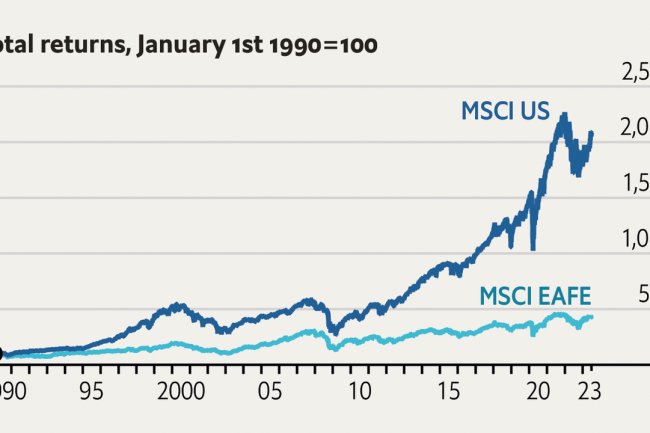Fed Launches System to Deliver Paychecks in a Flash
FedNow payments system could take years to catch on The Federal Reserve’s faster-payments initiative has been under discussion for more than eight years. Photo: Ting Shen for The Wall Street Journal By Andrew Ackerman Updated July 20, 2023 10:12 am ET WASHINGTON—The Federal Reserve hopes a new, faster-payments system will let U.S. bank customers send and receive money almost instantly, but it could be years before the speedier network gains widespread traction. The Fed said Thursday it launched its long-awaited FedNow system, which is intended to allow bill payments, paychecks and other common consumer or business transfers to be available quickly and around the clock. That is a change from the existing, slower system that is closed on weekends and can at times take several days b


The Federal Reserve’s faster-payments initiative has been under discussion for more than eight years.
Photo: Ting Shen for The Wall Street Journal
WASHINGTON—The Federal Reserve hopes a new, faster-payments system will let U.S. bank customers send and receive money almost instantly, but it could be years before the speedier network gains widespread traction.
The Fed said Thursday it launched its long-awaited FedNow system, which is intended to allow bill payments, paychecks and other common consumer or business transfers to be available quickly and around the clock.
That is a change from the existing, slower system that is closed on weekends and can at times take several days before consumers can access their funds. Last year those older rails handled 30 billion payments, valued at close to $73 trillion. The Fed’s system will compete with a real-time payments network built and launched by big banks in 2017, which processes a much smaller volume of payments.
While FedNow would theoretically give consumers access to their money immediately, only a small number of banks, credit unions and other firms that work with lenders are participating from the start, the Fed said on Thursday. Officials have said it could take a couple of years before the system gains more-widespread adoption and its capabilities are more fleshed out.

Countries including Brazil have set up near-instant payment systems.
Photo: Aloisio Mauricio/Fotoarena/ZUMA Press
“It’s not going to be a big bang,” said Craig Ramsey, head of real-time payments at ACI Worldwide, a payments-software company.
For millions of Americans, getting a payment immediately compared with in a day or two is crucial. An entire section of the financial-services industry fills the time gaps in today’s payment system, including payday lenders and check-cashing stores. They effectively offer bridge loans at high interest rates that prevent even more expensive utility shut-offs and overdraft fees.
Peer-to-peer platforms such as Venmo appear to transfer money quickly between consumers, but they typically still operate on a slower payment system, which means the actual transfers into consumers’ bank accounts can take days. Instant payments are available on these platforms, albeit at a fee.
Fed officials said the new system—a behind-the-scenes network that consumers wouldn’t interact with directly—would eventually allow individuals to instantly receive their paychecks and use them the same day, and help small businesses more efficiently manage cash flows without processing delays. It could help individuals who aren’t on a regular payroll, such as gig workers, get faster access to their wages. The federal government could also more quickly disburse emergency support payments using the new system.
“The Federal Reserve built the FedNow Service to help make everyday payments over the coming years faster and more convenient,” Fed Chair Jerome Powell
said in a statement.At present, the electronic banking system in the U.S. relies heavily on Automated Clearing House payments to move funds from one financial institution to another. The ACH system, which started in the 1970s, is only available during normal business hours and typically provides overnight transactions, so Monday’s payments show up in bank accounts on Tuesday. It also increasingly offers same-day payment transfers.
The real-time payments network owned by the largest banks lets customers get their money nearly instantly. That system now reaches about two-thirds of checking accounts, though many smaller banks and credit unions aren’t part of it, and not all payments at the bigger banks go through it. That system processed 58 million transactions for a total of $29 billion in the second quarter. That is up from 41 million transactions and $18 billion in payments a year earlier.
While other countries including Mexico and Brazil have set up near-instant systems, and some have mandated them, the Fed proceeded slowly. The project has been under discussion for more than eight years.
Fed delays have cost consumers hundreds of billions in overdraft fees, check-cashing fees and late fees, said Aaron Klein, a senior fellow at the Brookings Institution.
The new system could still sputter, he said, because the Fed isn’t requiring banks to provide consumers access to their money faster. There is a risk that FedNow “will fail to gain traction and the Fed will read into that a lack of demand for fast payments,” Klein added.
SHARE YOUR THOUGHTS
Do you think FedNow will change the way you send and receive money? Join the conversation below.
Banks on either end of a transaction must be part of FedNow to use it. The system won’t be able to interact with the big banks’ network, at least at first. The Fed has said such interoperability is a goal.
Another limitation: At least some of the system’s early adopters will only receive, and not send, FedNow payments, according to people familiar with the system’s launch.
Big banks, which spent more than $1 billion on their own system, had waged a lobbying effort to stop the Fed from developing FedNow. The prospect of a competing Fed system inadvertently delayed the spread of faster payments, industry officials have said. The Fed last month named some big banks including Wells Fargo and JPMorgan Chase among its early adopters.
Write to Andrew Ackerman at [email protected]
What's Your Reaction?

















